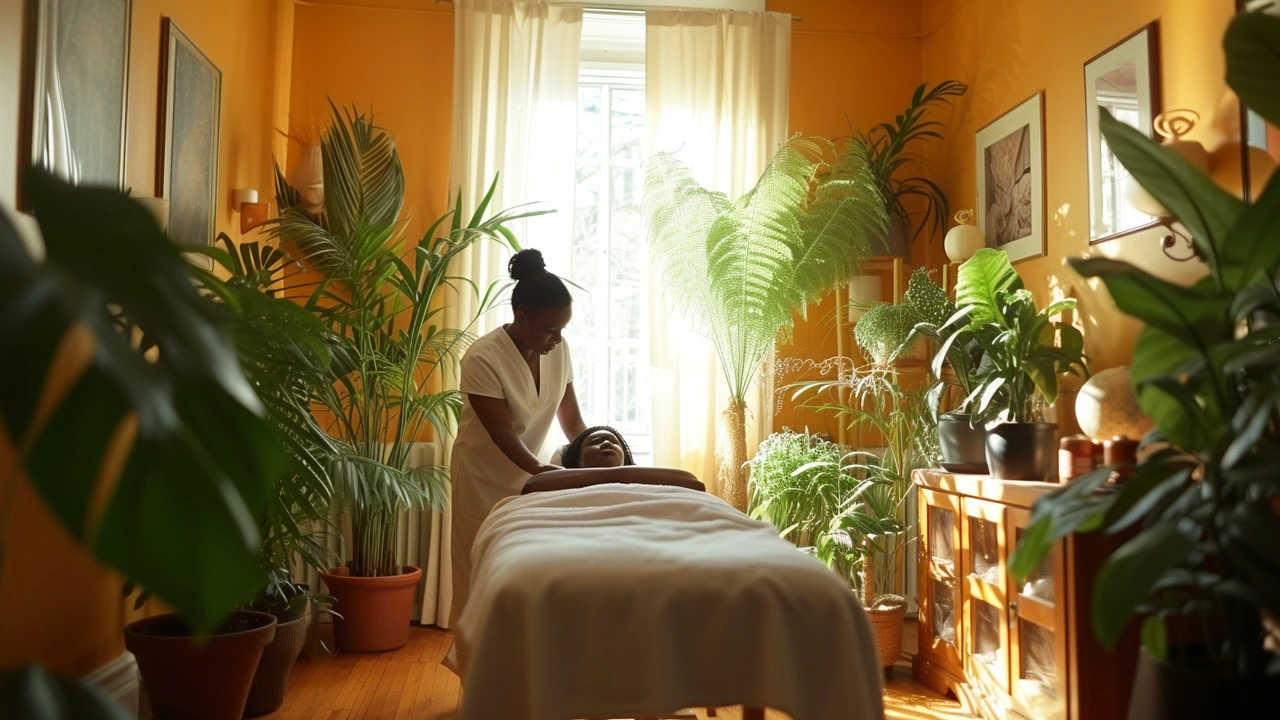Therapeutic Massage Benefits
Want real relief from pain, stress, or tight muscles? Therapeutic massage does more than feel good. It reduces muscle tension, eases nerve pain, lowers stress hormones, and helps sleep. Read this if you want clear, useful tips on what massage can actually do and how to choose the right approach.
What you’ll notice first
Most people feel immediate relaxation, less muscle tightness, and better range of motion after a session. If you have chronic pain, regular targeted work—like trigger point massage, deep tissue, or Ortho-Bionomy—can reduce flare-ups and make daily movement easier. For stress and anxiety, gentler methods such as Swedish, palliative, or healing touch calm the nervous system and improve sleep quality.
Different techniques do different things: hot stone or warm-stone massage warms tight muscles and boosts circulation; acupressure and Amma can cut headaches and ease stamina-related soreness; Feldenkrais and Hellerwork focus on movement patterns and posture. If you’re unsure, tell the therapist your top complaint—pain, sleep, posture, or stress—and they’ll match a method.
Simple, practical tips to get better results
1) Be honest about pain. Say where it hurts and how intense it is. Therapists can adjust pressure and technique. 2) Book a short follow-up plan: one session rarely fixes a chronic issue. Try 3–6 sessions spaced weekly or biweekly and track changes. 3) Hydrate and rest after a deep session—your body uses fluids to clear out metabolic waste and rebuild tissues. 4) Combine massage with light movement and gentle stretching to keep gains between visits.
Expect mild soreness after aggressive work; that’s normal for 24–48 hours. If pain spikes or you see swelling, contact your therapist or doctor. People with medical conditions—blood thinners, recent surgery, uncontrolled high blood pressure—should clear massage with their clinician first.
Want to try a specific style? Trigger point and deep tissue are great for stubborn knots. Lomi Lomi and Hilot offer an emotional and cultural layer to healing. Rolfing or Hellerwork help posture issues, while blind massage and palliative approaches focus on sensitive, supportive care. Hot-stone and snail facial massage target relaxation and skin benefits respectively. Think about your goal, then pick the style that matches it.
Therapeutic massage is a tool you can use regularly to feel better, move easier, and sleep deeper. Start with clear goals, communicate with your therapist, and follow simple aftercare. You’ll get more value from each session and see steady improvements over time.

Exploring the Impact of Therapeutic Medical Massage in Modern Healthcare Practices
Hey there, folks! I'm excited to dive deep into the world of medical massage and share with you all just how vital it is in today's healthcare landscape. You might be wondering, "What's all the buzz about?" Well, medical massage isn't just about relaxation; it's a key player in pain management, rehabilitation, and overall patient wellness. I've been exploring its benefits and I'm in awe of how it complements traditional medicine to help folks heal and feel better. Stick with me as I uncover the amazing roles of medical massage in healthcare and why it's not something to overlook!
Categories
- Health and Wellness (148)
- Alternative Therapies (86)
- Massage Therapy (40)
- Travel and Culture (15)
- Beauty and Skincare (9)
- Holistic Health (8)
- Health and Fitness (5)
- Spirituality (5)
- Other (2)
- Personal Development (2)
Popular Articles



